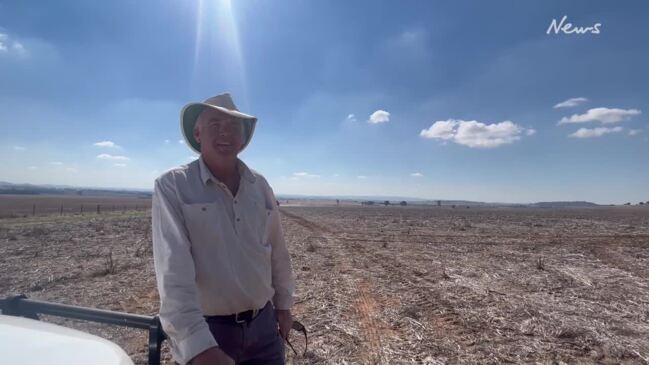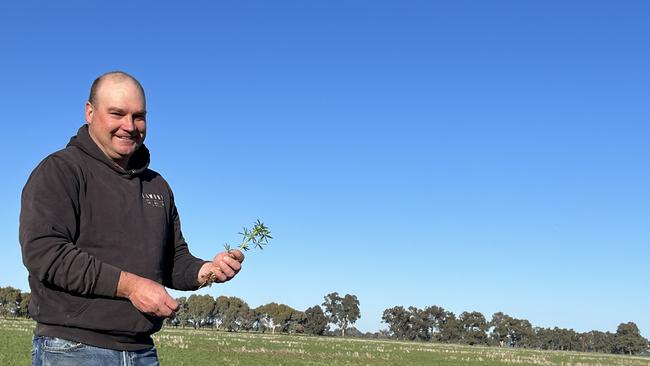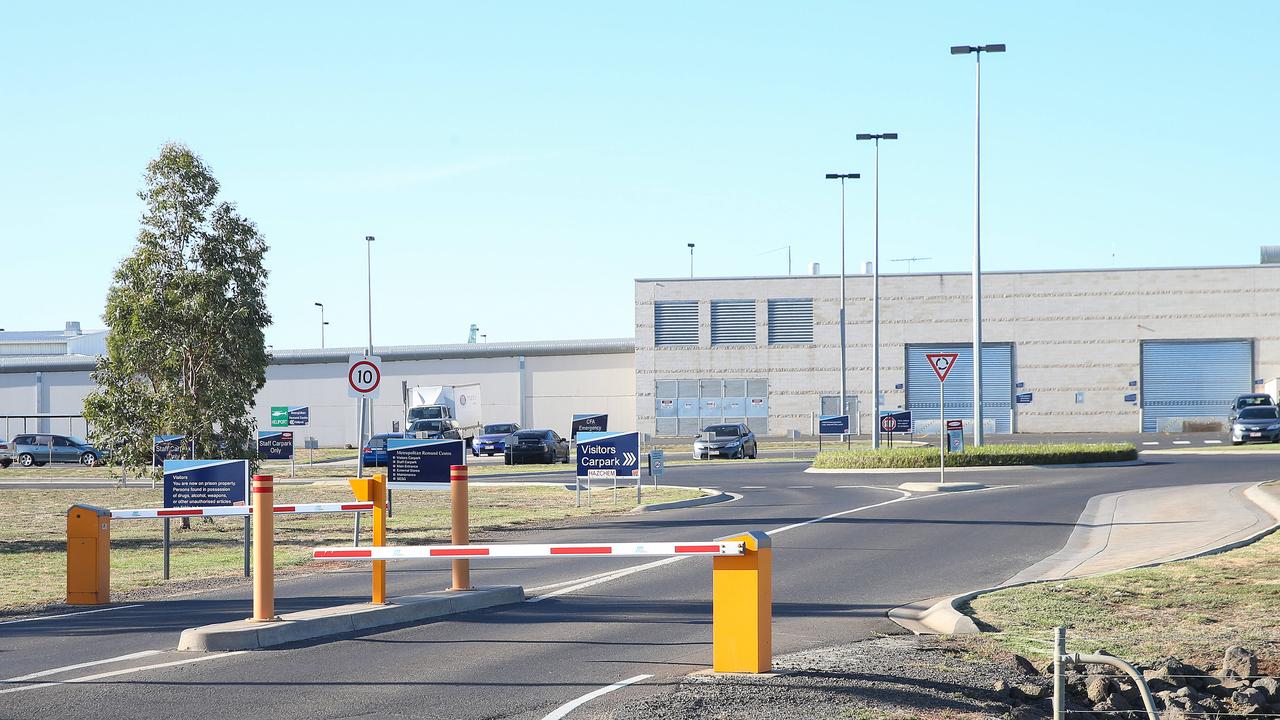Hand feeding sheep becomes ‘expensive hobby’ as dry conditions persist for farmers
A tough season and escalating expenses are making it difficult for many farmers as they prepare to sow winter crops with minimal soil moisture.

Victoria
Don't miss out on the headlines from Victoria. Followed categories will be added to My News.
Farmers in southeast Australia are under mounting pressure as they grapple with rising costs and fears of a prolonged dry spell while awaiting a crucial autumn break.
A tough season and escalating expenses are making it increasingly difficult for many farmers in Victoria, South Australia, and southern NSW as they prepare to sow winter crops with minimal soil moisture — just as counterparts in the north of the country contend with an abundance of water.
Without season-defining rain, some producers in the south are already stretched ahead of sowing, relying on costly and labour-intensive practices such as handfeeding livestock and carting water - challenges compounded by seasons of lower farmgate returns.
CUMULATIVE COST BURDEN
“Everyone is cautious about things,” said Jason Mellings, who farms between Donald and Warracknabeal in northwest Victoria.
“When we add up the costs, (growing crops) is expensive. Urea is at $780 (a tonne), MAP $1200 (a tonne), and diesel $1.80 (a litre). Just getting machinery fixed is expensive, then there is insurance and some of us in Victoria have fire levies looming in the future.
“Nobody works for less than $40 an hour, so there is labour to take into account, too.”
While no single input has spiked as dramatically as urea did in 2022 - when it surged above $1200 a tonne - farmers say the cost burden is now “cumulative and collective,” making this year’s crop more expensive to grow.

UNCERTAIN FORECAST
NSW Farmers grains chairman Justin Everitt, from Brocklesby, near Albury, said farmers who had soil moisture were more confident about 2025 but all were feeling the strain of high costs.
“It is making it harder to be profitable in what we are doing,” Mr Everitt said. “The costs are cumulative and across the board. It is not just the urea and MAP, we have lime at $100 a tonne, and fuel is going up, rates are going up, and there are insurance pressures,” he said.
While Anzac Day, April 25, is considered the ideal date for an autumn break in southern Australia, the outlook offers little optimism.
The Bureau of Meteorology’s long-range forecast for April indicates a “neutral” outlook – around a 50:50 chance of above or below-average rainfall - for much of southeast Australia. However, drought-affected areas in southwest Victoria and South Australia face a 60–65 per cent chance of below-average rainfall.
May’s forecast also points to below-average rainfall across much of Victoria, northern Tasmania, inland NSW, and parts of South Australia’s agricultural regions. Meanwhile, temperatures are expected to be higher than average through April and May, according to the BOM.
Harrow farmer and West Wimmera councillor Tom Houlihan said conditions remained “hot, fine with no sign of rain” in the state’s west, as farmers continued their “expensive hobby of feeding sheep seven days a week”.
“This is our second year running hand feeding sheep, last year we were feeding up until the end of August.
“Things are a damn sight harder when you are feeding sheep every day plus pumping and carting water.
“I’m not sure how many people are carting, when you go to the pub people don’t want to talk about feeding sheep and carting water, they want a break.
“Hay supplies are becoming very limited.”

FLOODS ADD TO STRAIN
In contrast, parts of Queensland and NSW were swamped with water in the past week, with floods causing widespread damage and considerable livestock losses in some districts.
Some of the biggest totals in Queensland were recorded at Gregory Springs Station, north of Hughenden, which picked up 366mm in the seven days to 9am Monday with 335mm measured at Quilpie, 250mm at Charleville, 241mm at Winton and 240mm at Isisford.
In NSW, Lightning Ridge recorded 205mm, ahead of Walgett (195mm), Wee Waa (190mm), Narrabri (142mm), Gunnedah (126mm), Tamworth (116mm) and Brewarrina (102mm).
The heaviest rainfall in Victoria over the past week was in East Gippsland, where Cann River recorded 34mm, while the North East saw totals of 16mm at Lake Eildon and Benalla. However, most regions received only 3–5mm, and much of western Victoria and South Australia remained dry.
Cam Conboy, a director of Gorst Rural at Lake Bolac, said his district missed out on weekend rain, leaving livestock and cropping farmers desperately seeking relief.
“Things are looking dry and dusty and we are getting southeasterly winds,” Mr Conboy said. “Farmers have been trying to maintain ground cover and manage livestock.”
STILL HOPEFUL FOR A BREAK
Paul Cleton, of Hillston in southern NSW, said 8mm of rain fell locally on the weekend but farmers were hoping for more.
“It has been a bit patchy and we have missed out,” said Mr Cleton, who added that cotton harvest would start in the district in about a fortnight.
While many producers in southern Australia have been reducing stock numbers, last week’s floods in Queensland are expected to impact livestock markets in both the short and long term, though losses are yet to be estimated.
The benchmark Eastern Young Cattle Indicator closed on Monday at 669c/kg carcass weight, up 24c/kg for the week, buoyed by renewed northern confidence after rain. Feeder steers also rose 18c/kg to 377c/kg, while some lamb categories saw gains, with the Merino lamb indicator up 36c to 660c/kg and mutton rising 21c to 436c/kg.
The full impact of the Queensland floods is yet to be felt, with major markets at Roma, Charters Towers and Blackall all cancelled this week.
Meat and Livestock Australia’s Stephen Bignell said processors may look south to secure stock.
“There will definitely be supply chain disruptions from the rain and how this plays out with prices remains to be seen,” he said.
“But the only indicator which did not rise last week was the price for dairy cows, which reflects the season in the south.”
More Coverage
Originally published as Hand feeding sheep becomes ‘expensive hobby’ as dry conditions persist for farmers




